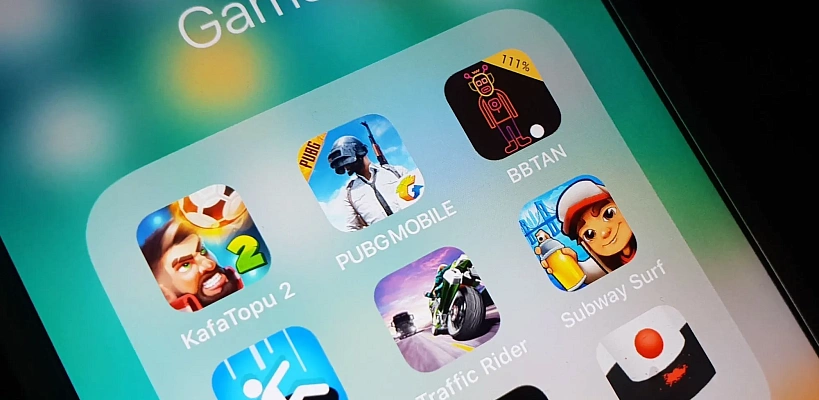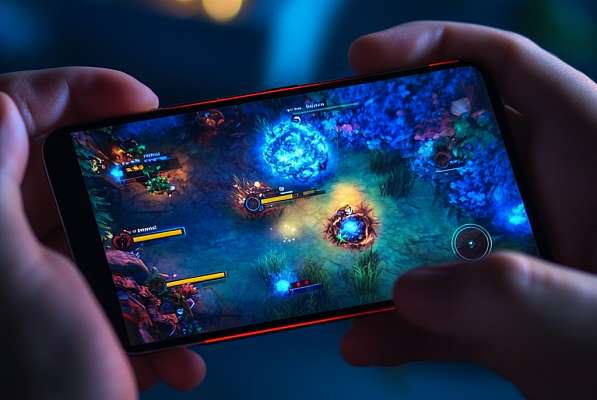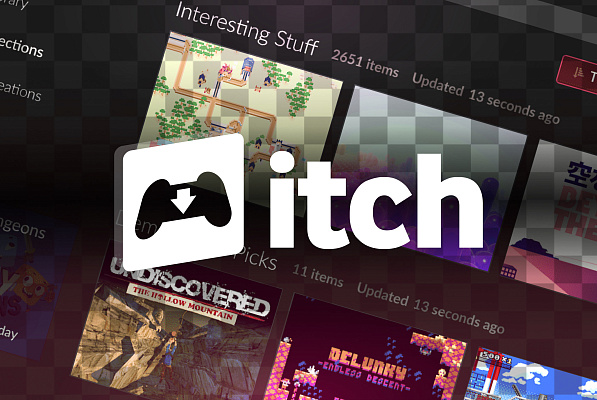You’ve just created your dream game—a pixel art platformer, a cozy puzzle, or maybe an epic roguelike. You uploaded it to the App Store, but… crickets. Nobody’s downloading. Sound familiar? In 2025, the App Store is a jungle where thousands of games fight for players’ attention. Without a big advertising budget, breaking through feels impossible. But here’s the good news: App Store Optimization (ASO) is your free ticket to success. It’s like SEO for websites, but for apps, helping your game rise in search results and recommendations.
ASO isn’t just a bunch of keywords—it’s an art of making your game visible and irresistible. And the best part? You don’t need a fat wallet to pull it off. In this guide, I’ll show you how to optimize your game’s App Store page using only free tools and a bit of cleverness. We’ll cover everything: fr om the title and screenshots to localization and reviews. Let’s dive in!
Why ASO Is a Lifesaver for Indie Games
The App Store in 2025 is like a massive supermarket, with shelves overflowing with games. According to MobileAction, about 60% of downloads come fr om searches, and nearly half are from generic queries like “puzzle” or “platformer.” Without ASO, your game is like a product on the furthest shelf, wh ere no one looks. Good optimization boosts you to the top of search results, increases views, and, most importantly, conversions—when players don’t just see your game but download it.
For indie developers, ASO is a lifeline. Big studios have millions for ads, but you’ve got time, enthusiasm, and this guide. With the right approach, you can outshine competitors without spending a dime. Ready? Let’s break down how it works.
ASO Basics: Key Elements
ASO is like assembling a puzzle, wh ere every piece matters. Here are the main elements to optimize:
- Game Title: The first thing players see. It should be memorable and include keywords.
- Keywords: They help your game appear in searches.
- Description: Your story that convinces players to download.
- Screenshots: A visual showcase proving why your game is awesome.
- Icon: The face of your game that needs to stand out.
- Video: A short clip showcasing gameplay.
Each of these elements can be improved for free. Let’s dive into how.
1. Game Title: Your First Step to Success
The title isn’t just your game’s name—it’s a powerful ASO tool. It should be short, memorable, and packed with keywords players search for. For example, if you made a pixel art platformer, a title like “Pixel Quest: Retro Adventure” instantly tells players what the game is about and includes popular words like “pixel” and “adventure.”
How to do it on a budget?
- Use Google Keyword Planner (Google Keyword Planner) or App Store autocomplete. Enter words related to your game (e.g., “platformer,” “puzzle”) and see what people search for.
- Study competitors. If your game is similar to Monument Valley, check what words they use in their title.
- Keep the title under 30 characters—long titles get cut off in search results.
Example: The game Balatro used the title “Balatro: Roguelike Deckbuilder,” which helped it rank high for searches like “roguelike” and “deckbuilder.”
2. Keywords: Your Ticket to Search
Keywords are the heart of ASO. In the App Store, you get up to 100 characters in the “Keywords” field, so every character counts. Your goal is to find words players search for that aren’t too competitive.
How to do it on a budget?
- App Store Autocomplete: Start typing words related to your game and see what search suggests. For a puzzle game, try “puzzle game,” “brain teaser,” “logic game.”
- Competitor Analysis: Check out similar games’ pages and their keywords. Free tools like AppTweak offer limited free features for analysis.
- Long-Tail Keywords: Instead of “game,” use “pixel platformer game” or “retro adventure free.” They’re less competitive and target your audience more precisely.
- Avoid Repetition: If a word is in the title, don’t add it to keywords—it wastes space.
Tip: Separate words with commas, no spaces, to fit more. For example: “pixel,platformer,retro,adventure,free.”
3. Description: Tell Your Game’s Story
The description is your chance to convince players to download your game. It should be engaging, clear, and include keywords without looking like spam.
How to do it on a budget?
- Text Structure: Break the description into short paragraphs:
- What’s the game about? Briefly describe the story or concept. For example: “Dive into a retro adventure with Pixel the cat, searching for his home!”
- Features: List key mechanics (e.g., “procedural levels,” “co-op mode”).
- Who’s it for? Specify the audience: “For fans of puzzles and retro games.”
- Keywords: Weave them in naturally. Instead of “This is a game,” write “This is a thrilling pixel platformer.”
- Call to Action: End with a phrase like “Download now and start the adventure!”
Example: Among Us’s description uses humor and clearly explains why it’s great for friends, boosting its conversions.
4. Screenshots: Your Visual Showcase
Screenshots are the first thing players see after the icon. They need to be vibrant, clear, and tell your game’s story.
How to do it on a budget?
- Pick Key Moments: First screenshot—main character or start screen; second—core mechanic; third—environment; fourth—interface.
- Add Text: Use short phrases like “Jump and Win!” or “Solve Puzzles!” Free tools like Canva or Photopea help add text and effects.
- Optimize Size: App Store requires screenshots at 1242x2208 pixels for iPhone.
- Study Competitors: See how Stardew Valley uses screenshots to showcase farm life—each frame conveys the vibe.
Tip: Create 5–7 screenshots to show gameplay variety. Refresh them every 1–2 months to keep interest alive.
5. Icon: The Face of Your Game
The icon is what makes your game stand out in search and on a phone’s home screen. It should be simple, vibrant, and memorable.
How to do it on a budget?
- Simplicity: Use a minimalist design with bold colors. For example, Monument Valley’s icon is a clean, geometric style that grabs attention.
- Free Tools: Canva or Photopea offer icon templates. Create a 1024x1024 pixel square.
- Test It: Ask friends to rate the icon—it should be clear even at small sizes.
Example: Balatro’s icon uses vibrant cards and a minimalist background, perfectly reflecting the game’s style.
6. Video: Your Gameplay in Motion
A video in the App Store is like a movie trailer. It shows what your game looks like and can boost conversions by 20–30%.
How to do it on a budget?
- Short Clip: Make a 15–30-second video showing gameplay, key mechanics, and vibe.
- Free Editors: Use DaVinci Resolve or HitFilm Express for editing.
- Music: Find free tracks on Freesound (check licenses).
- Text and Effects: Add captions like “Download Now!” or “Explore the World!”
Tip: Create a vertical version of the video for social media like TikTok or Instagram Reels to use for promotion.
Advanced Strategies: Leveling Up
Now that the basics are set, let’s add some magic with advanced techniques.
1. Localization: Conquer the World
Localization is adapting your game for different languages and cultures. In 2025, the global mobile gaming market is booming, especially in Latin America, Southeast Asia, and the CIS.
How to do it on a budget?
- Text Translation: Use AI tools or DeepL to translate the title, description, and keywords into languages like Spanish, Chinese, or English.
- Cultural References: Adapt visuals. For example, for a Chinese audience, add red and gold colors associated with luck.
Example: Among Us translated its description into 10 languages, expanding its reach in the App Store.
2. Managing Reviews: Build Trust
Reviews and ratings are fuel for ASO. Games with 4.0+ ratings gain more trust and rank higher.
How to do it on a budget?
- Encourage Reviews: After a positive moment in the game (e.g., beating a level), add a pop-up asking for a review. Use Unity or Godot for integration.
- Respond to Reviews: In App Store Connect, reply to all reviews, especially negative ones. For example: “Thanks for the feedback! We’ll fix the bug in the next update.”
- Soft Launch: Release the game in a small country (e.g., New Zealand) to gather early reviews before a global launch.
Tip: Avoid fake reviews—Apple cracks down hard on them.
3. A/B Testing: Experiment
A/B testing lets you compare different versions of your game’s page to find the best one.
How to do it on a budget?
- In App Store Connect, create up to three page variants (e.g., different screenshots or descriptions).
- Test one element at a time: first the icon, then the description.
- Analyze results in App Store Connect: look at impressions and conversion rate.
Example: Balatro tested different screenshots, boosting conversions by 15%.
4. Analytics: Track Success
Without analytics, you’re like a captain without a compass. Track how players find your game and what hooks them.
How to do it on a budget?
- Use App Store Connect to monitor impressions, conversion rate, and keyword rankings.
- Check free versions of App Annie or Sensor Tower for competitor analysis.
- Create a game page on a site.
Tip: Update keywords every 2–3 weeks based on analytics.
Mistakes to Avoid
- Keyword Stuffing: Don’t cram descriptions and keywords with repetitive words—it erodes trust.
- Boring Visuals: Blurry screenshots or a dull icon scare players away.
- Ignoring Reviews: Not responding to negative feedback makes players lose trust.
- Static Page: Without updates, your game quickly loses ranking.
Conclusion
ASO is your free ticket to the top of the App Store. Optimize your title, keywords, description, screenshots, and icon to attract players. Use free tools, experiment with A/B testing, and don’t forget localization. Reviews and analytics will help you figure out what works.





